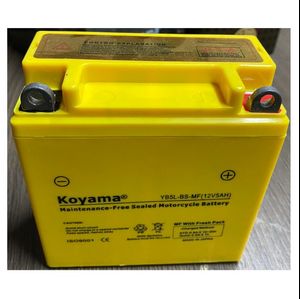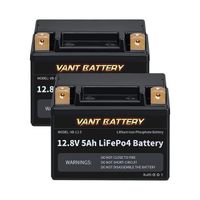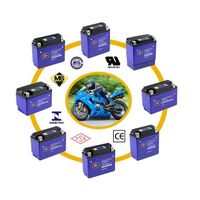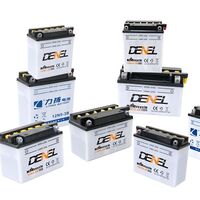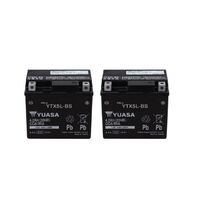YB5L-BS 12V 5Ah 12N5 Sport battery with battery power
- $5.20 / >=10000 pieces
- 10000 pieces
- Guangzhou CBB Battery Technology Co., Ltd.
- Guangdong, China
- Mr Evans Mou
PRODUCT DETAIL
| Packaging Details: | Cartons and pallets | Sales unit: | single product |
| Gross weight per piece: | 950.000 kg | Certification: | International Organization for Standardization |
| Original Equipment Manufacturer: | available | brand: | hill |
| place of origin; place of origin: | Guangdong, China | Single package size: | 110X80X100 cm |
| Packaging Preview: | Warranty: | 13 months |
contact us
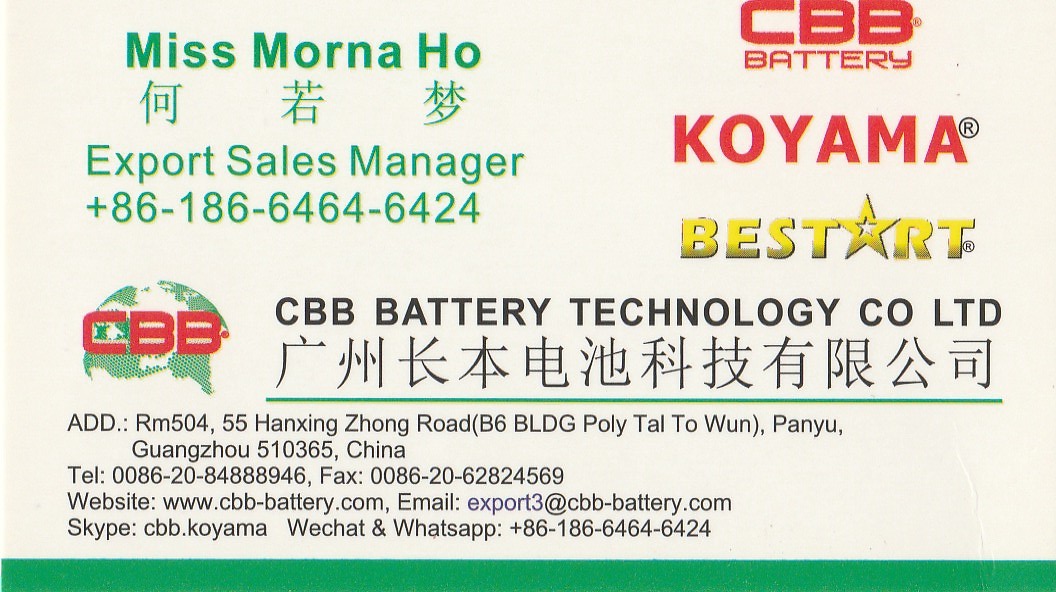
Contact Mona:
If you need price or more details please feel free totouchMs. Mona
Via WeChat/Whats-App/mobile number via:+86 186 6464 6424
or email:[email protected]
detailed picture
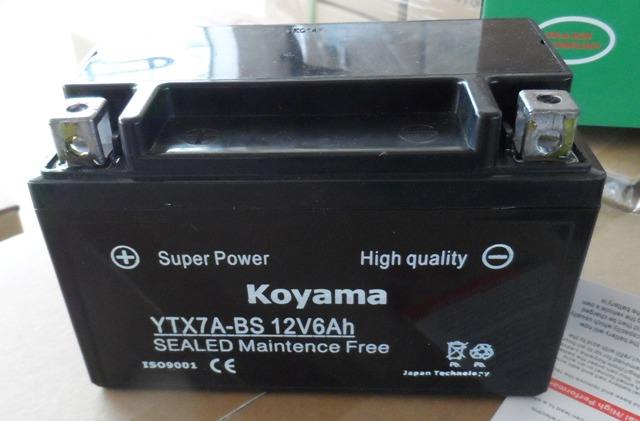
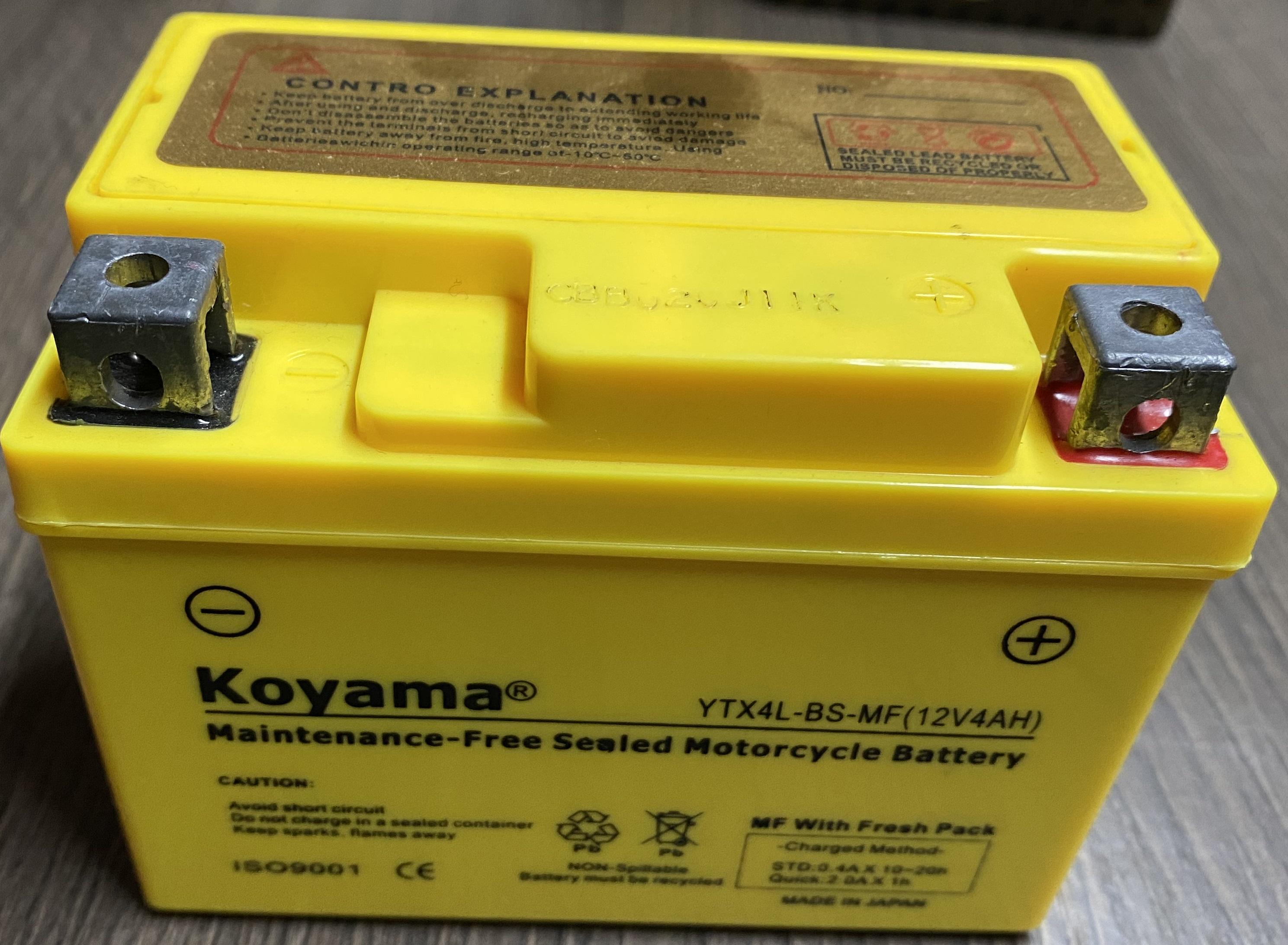
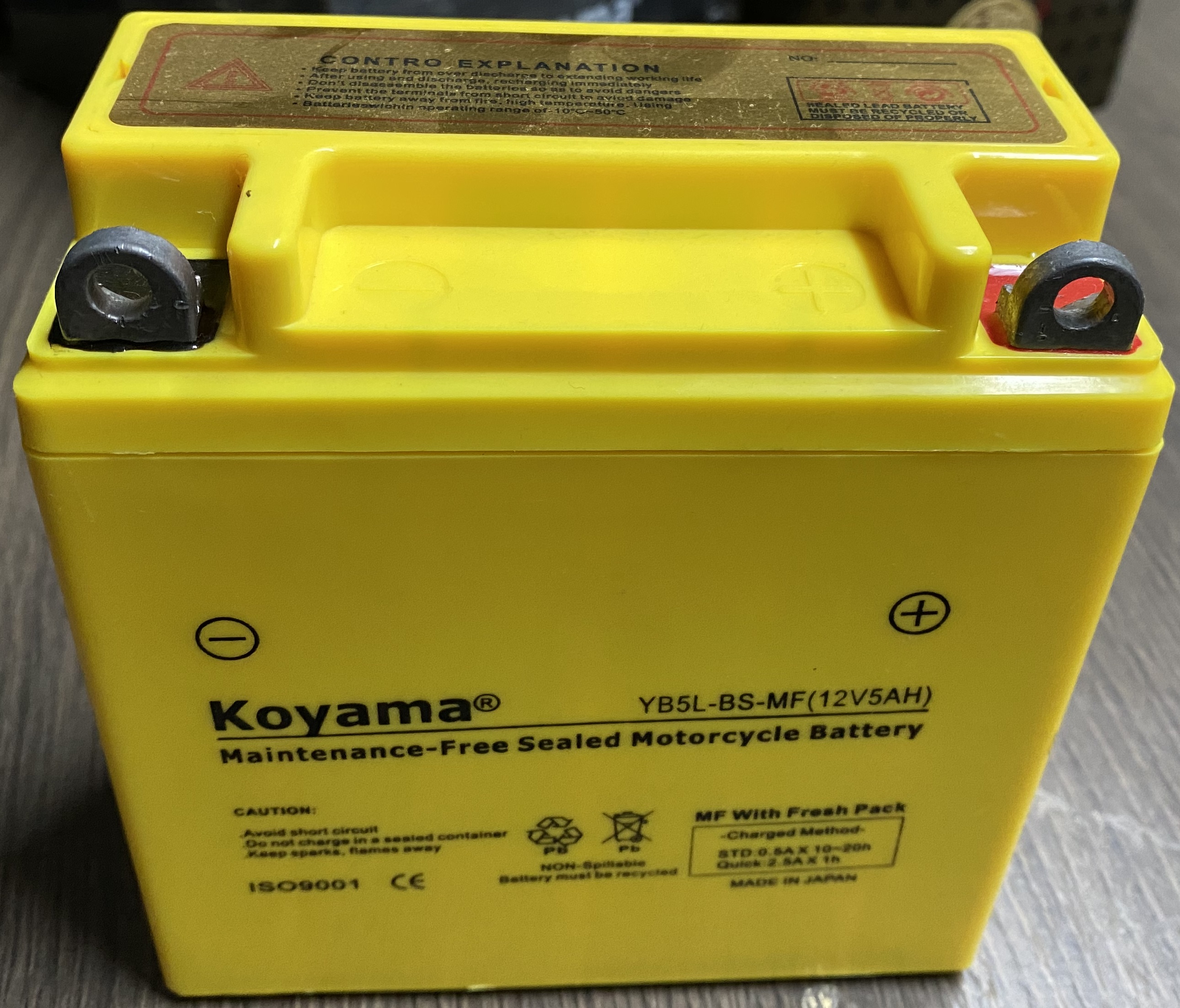
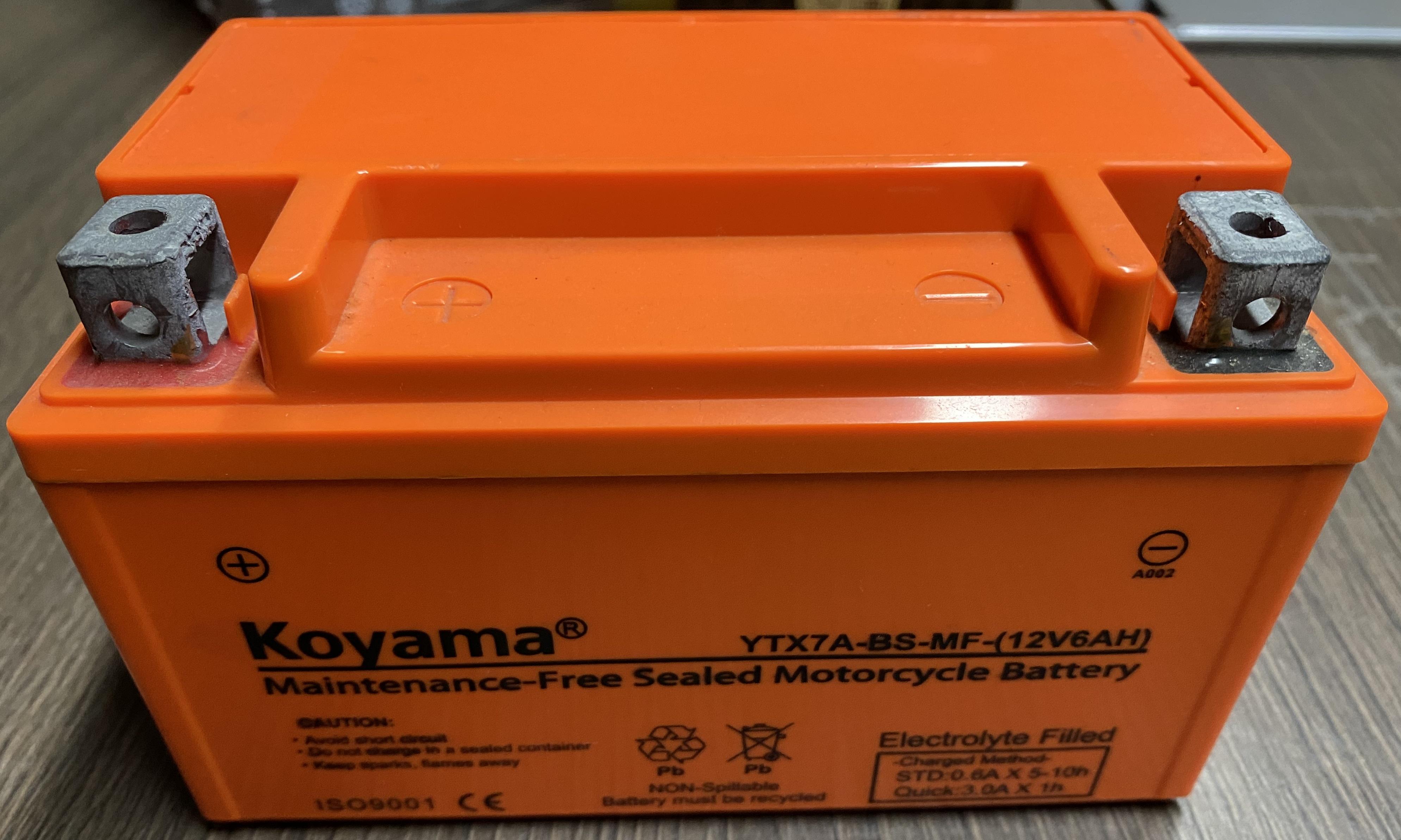
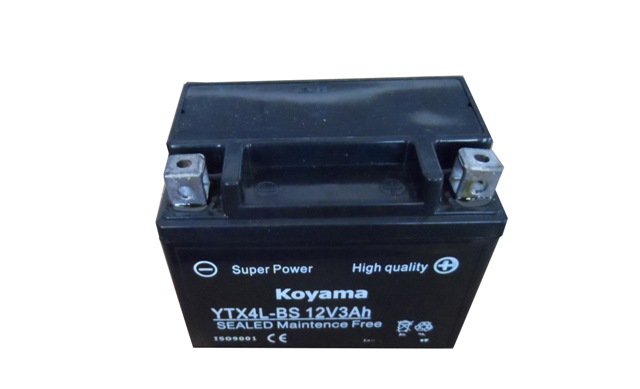
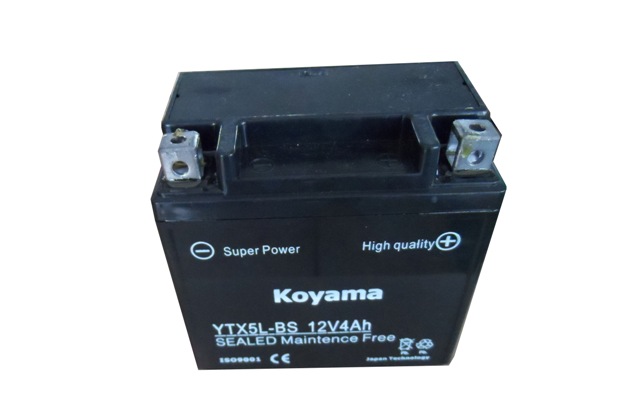
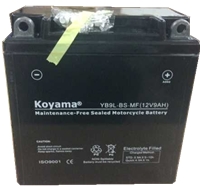
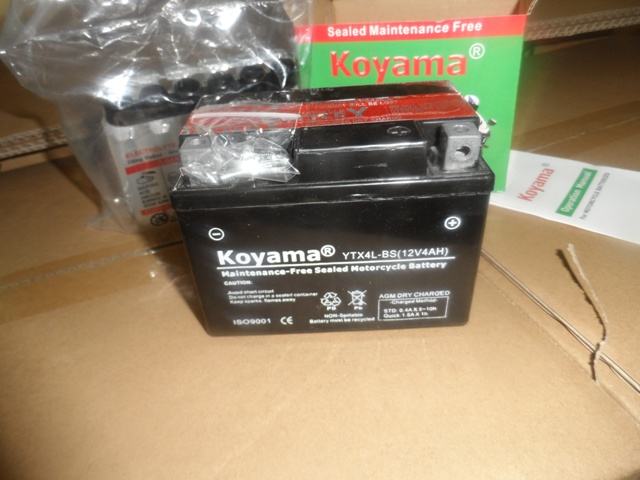
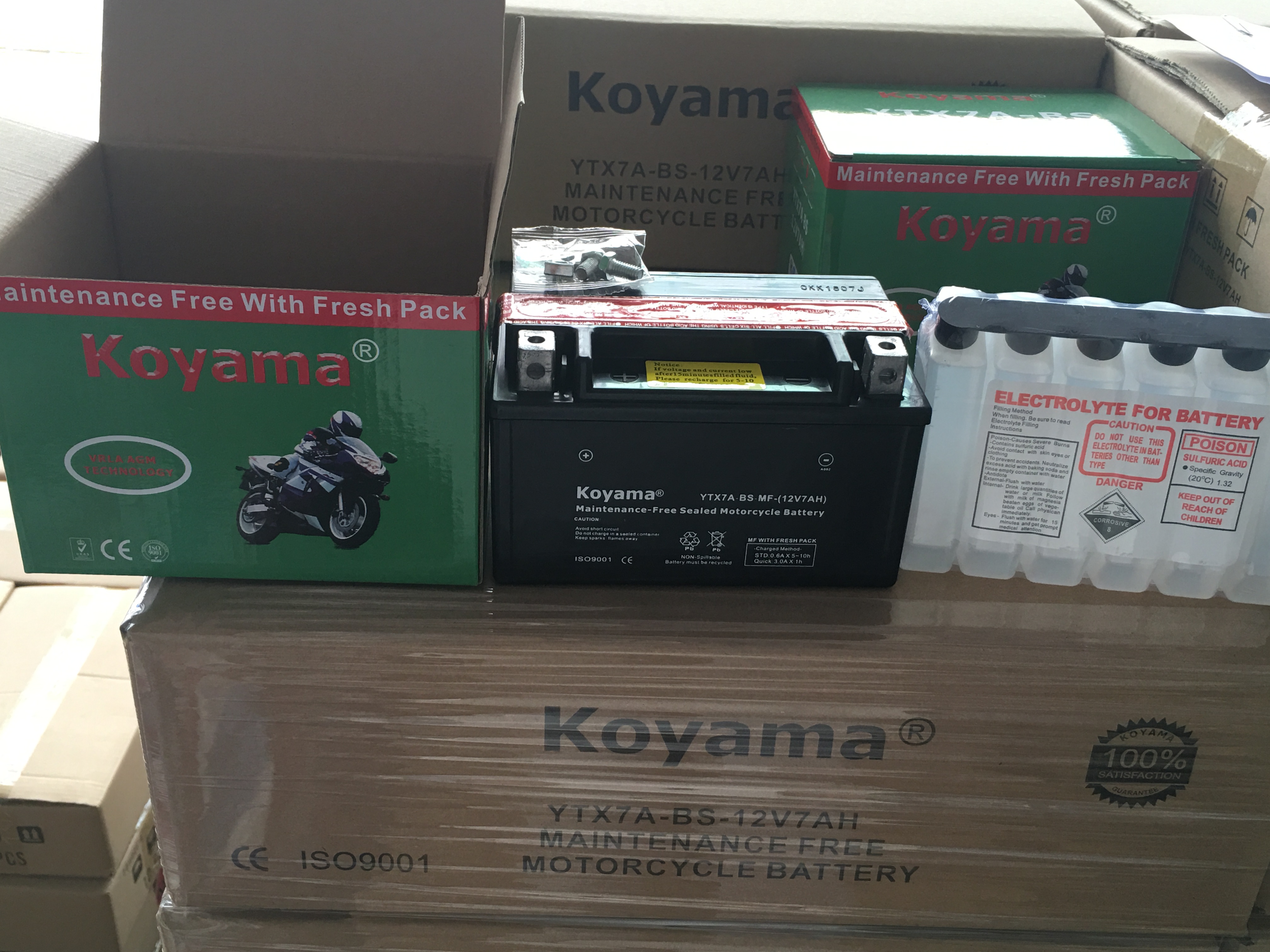
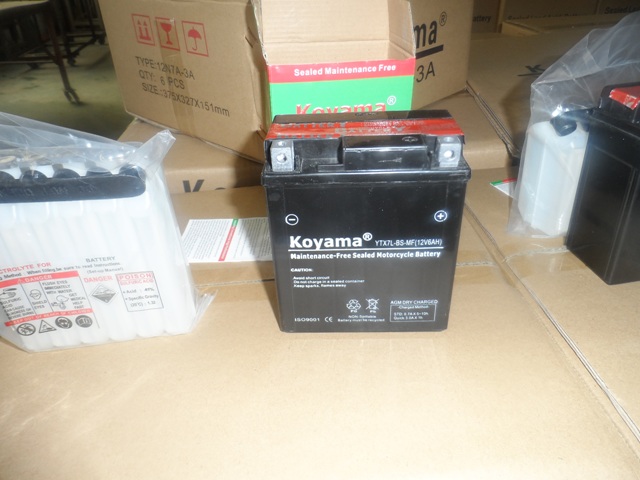
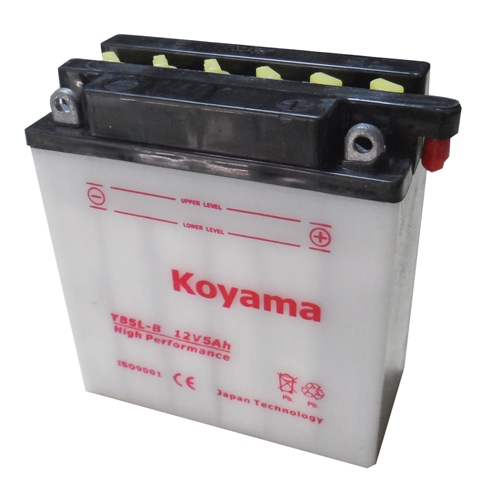
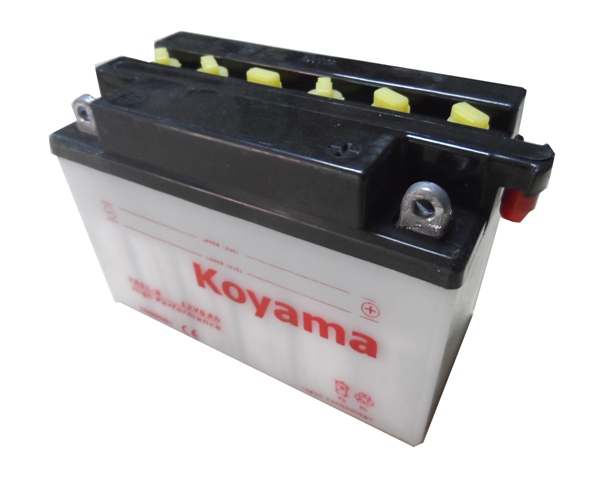
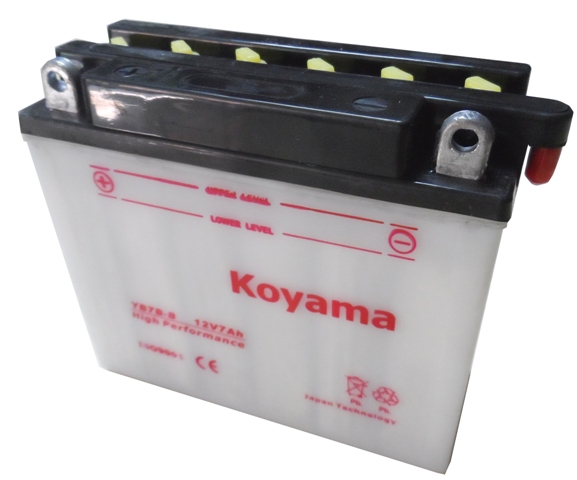
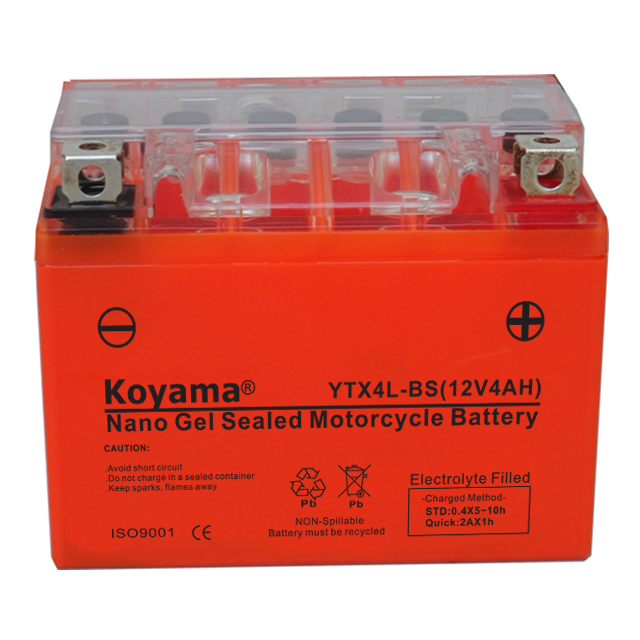
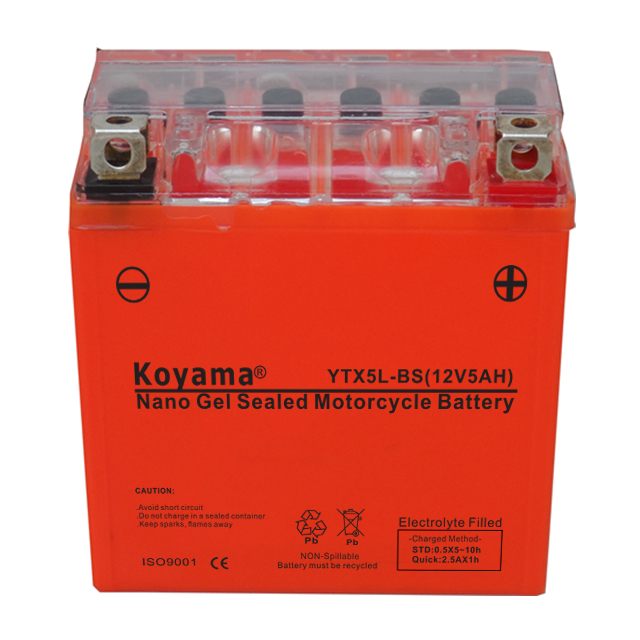
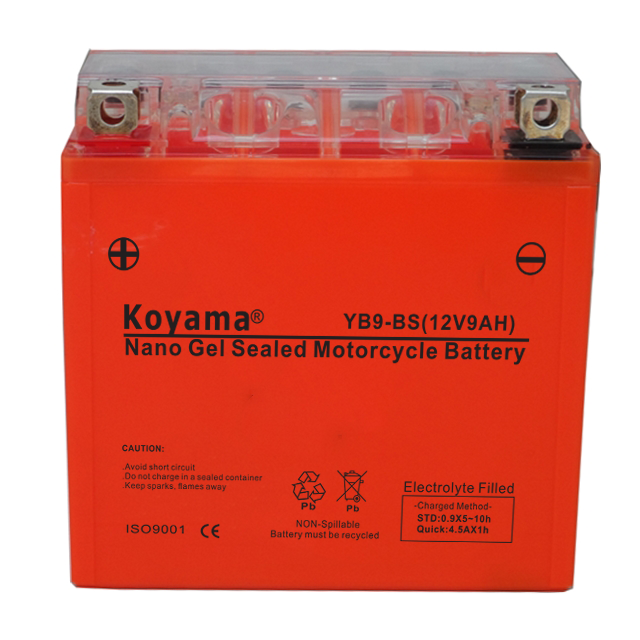
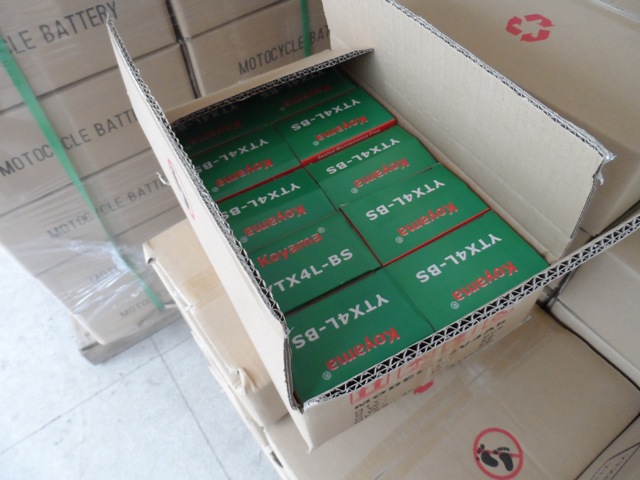
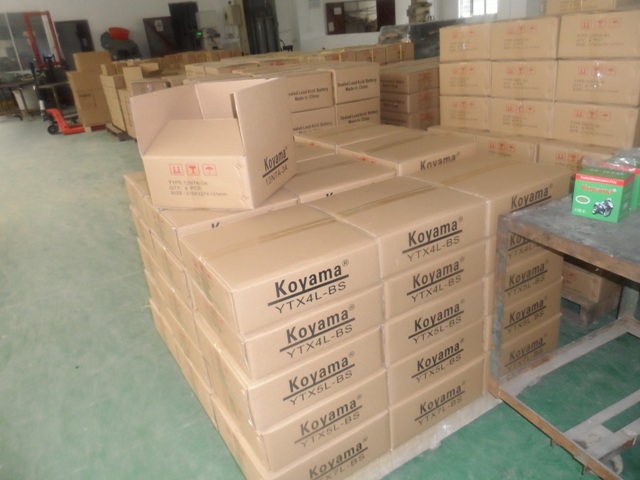
Product Description
Factory Activated Motorcycle Sealed Battery
KOYAMA MF Factory Activated and Factory Sealed Motorcycle Battery 12V - Maintenance Free Absorbent Glass Mat - VRLA (Valve Regulated Lead Acid) - VRLA (Valve Regulated Lead Acid) means the battery is perfect for those who have better things to do than battery maintenance people. Our permanently sealed VRLA battery does not need to be refilled; however, it still requires regular charging. Great for motorcycles, scooters, ATVs, riding lawn mowers and personal watercraft.
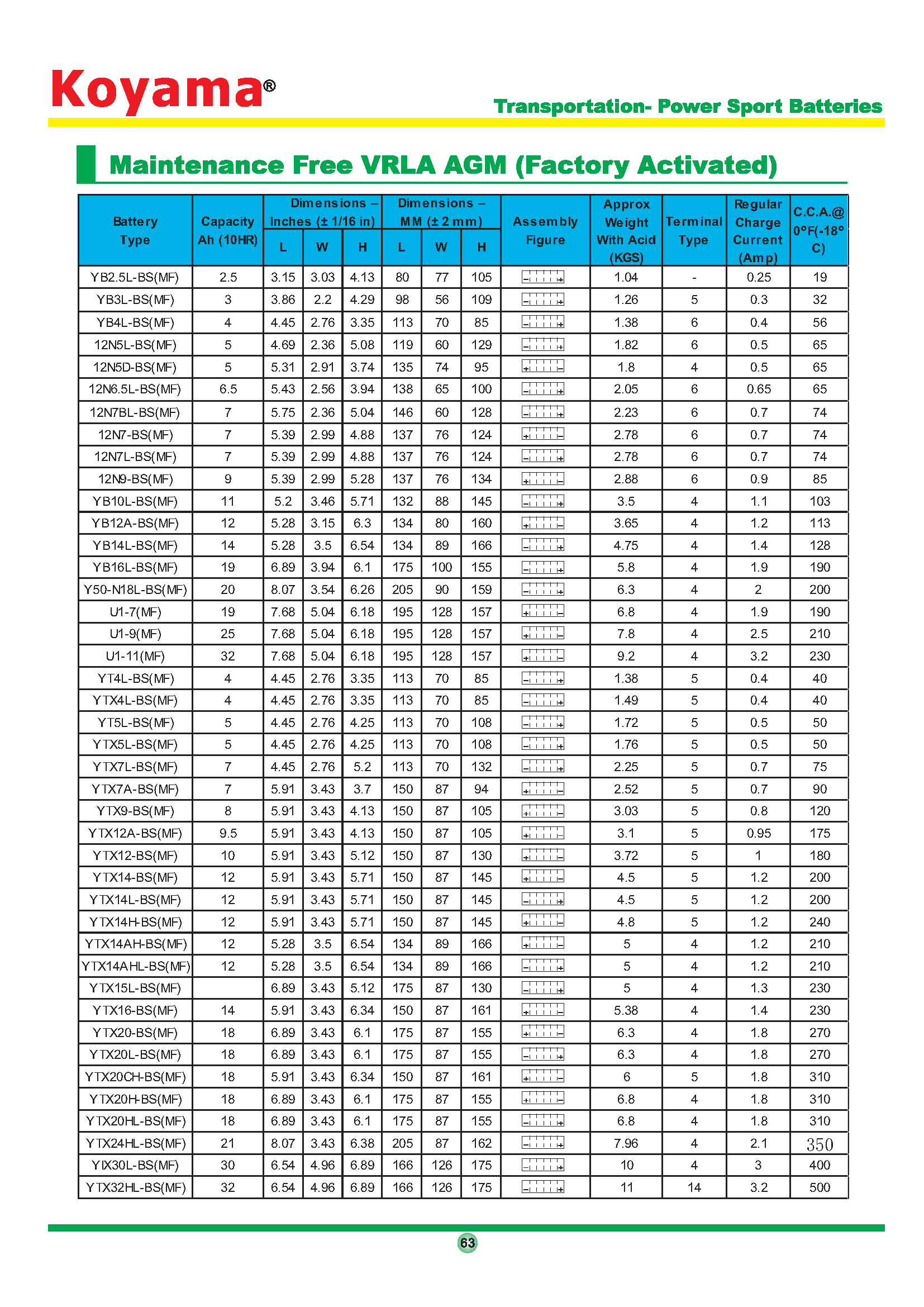
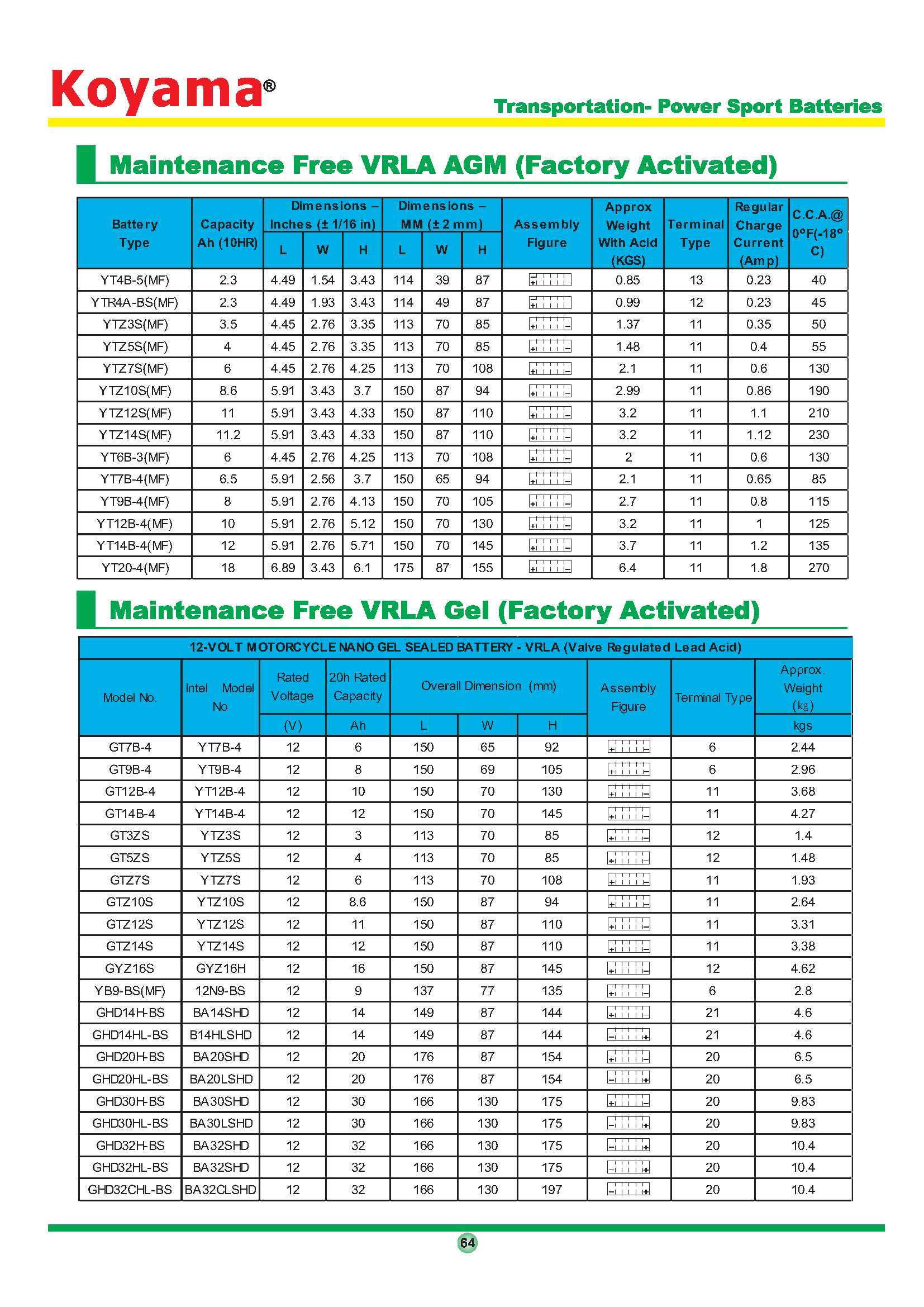
Maintenance Free Motorcycle Battery with 6 Fresh Acid Bottles - VRLA LEAD ACID
KOYAMA DRY Maintenance Free VRLA Motorcycle Battery (User Activated) - VRLA (Valve Regulated Lead Acid) is a battery perfect for anyone who has better things to do than battery maintenance! Our permanently sealed VRLA battery does not need to be refilled; however, it still requires regular charging. Great for motorcycles, scooters, ATVs, riding lawn mowers and personal watercraft.

High Performance Motorcycle Batteries
KOYAMA High Performance Motorcycle Batteries - These batteries are the first to be produced using lead calcium technology, thus increasing performance and reducing maintenance. But most importantly, it has a longer lifespan than conventional batteries.
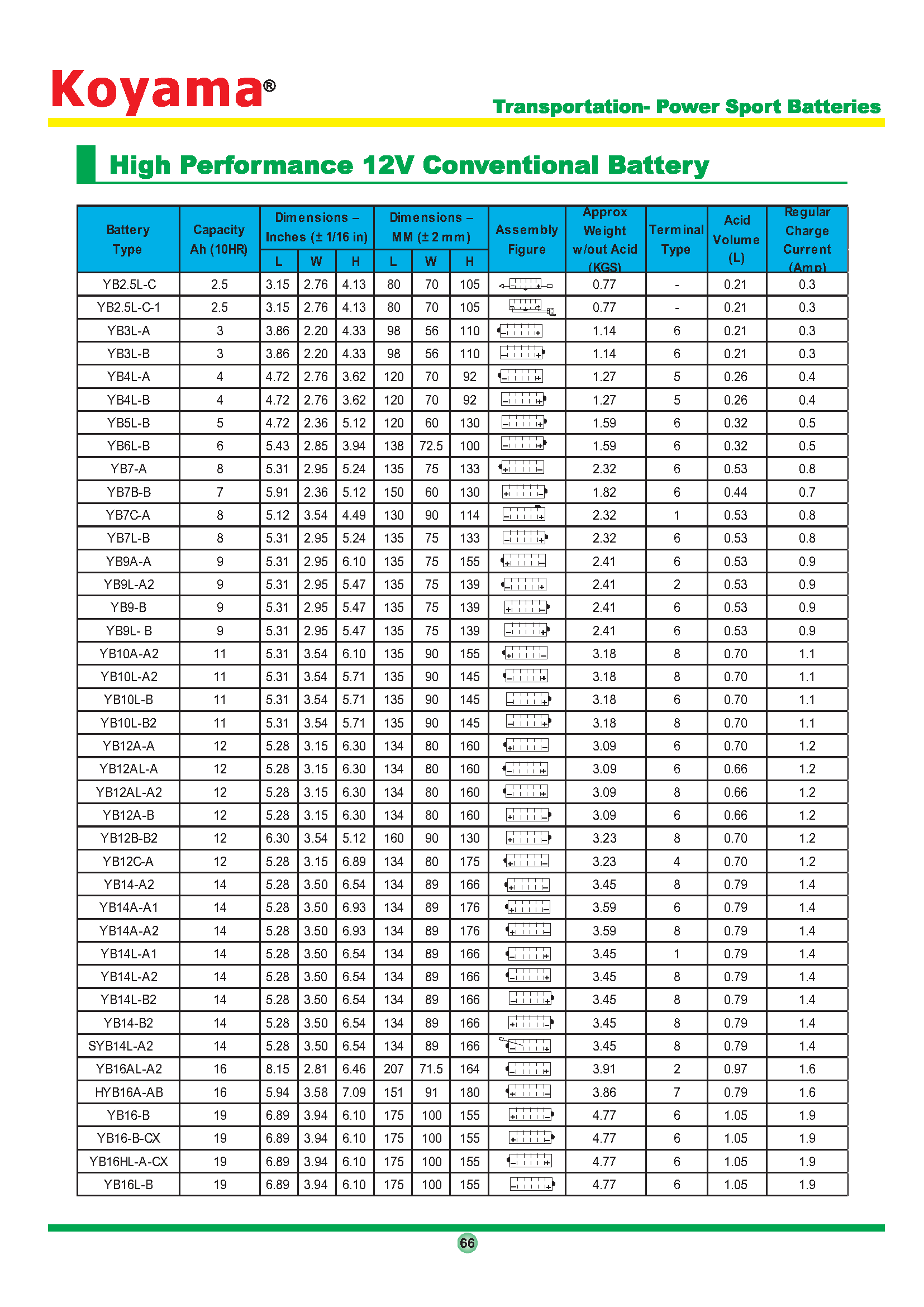
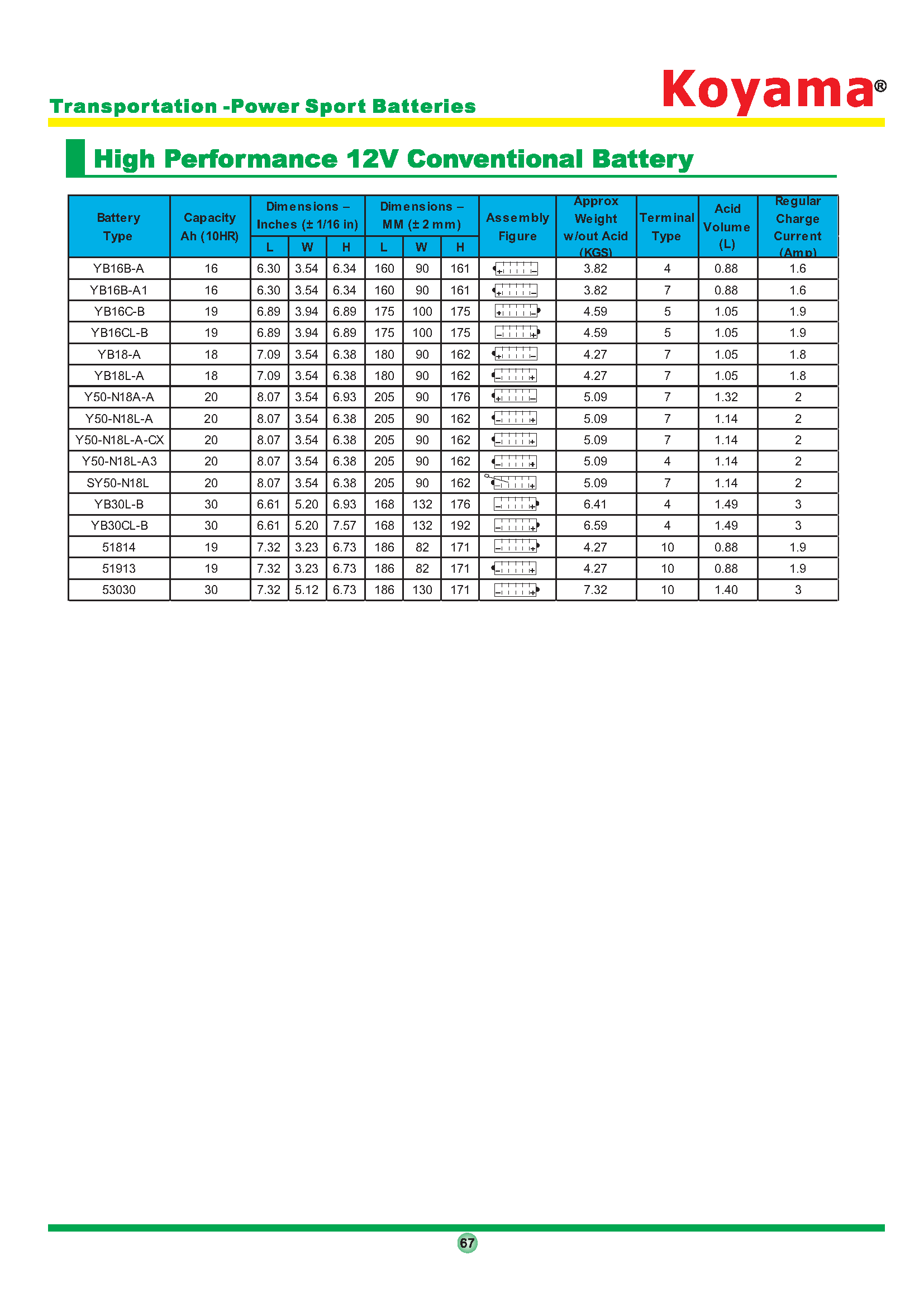
conventional motorcycle battery
KOYAMA TRADITIONAL BATTERIES - 6/12 Traditional Batteries are traditional batteries, they are designed for long lasting power and convenience to meet all OE starting requirements. Durable transparent container for easy inspection of electrolyte. It is also resistant to corrosion and vibration. These batteries are suitable for a variety of applications.
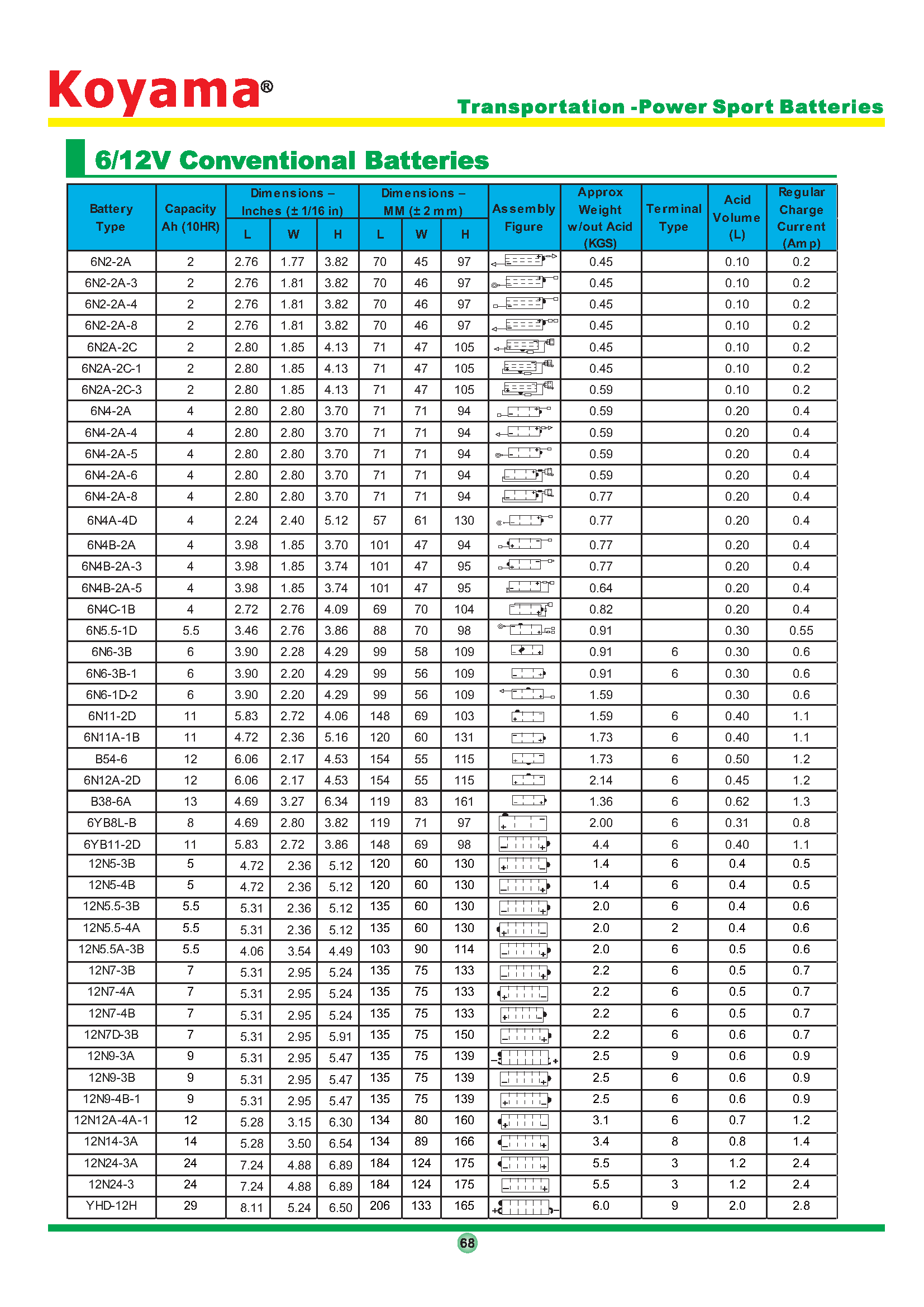
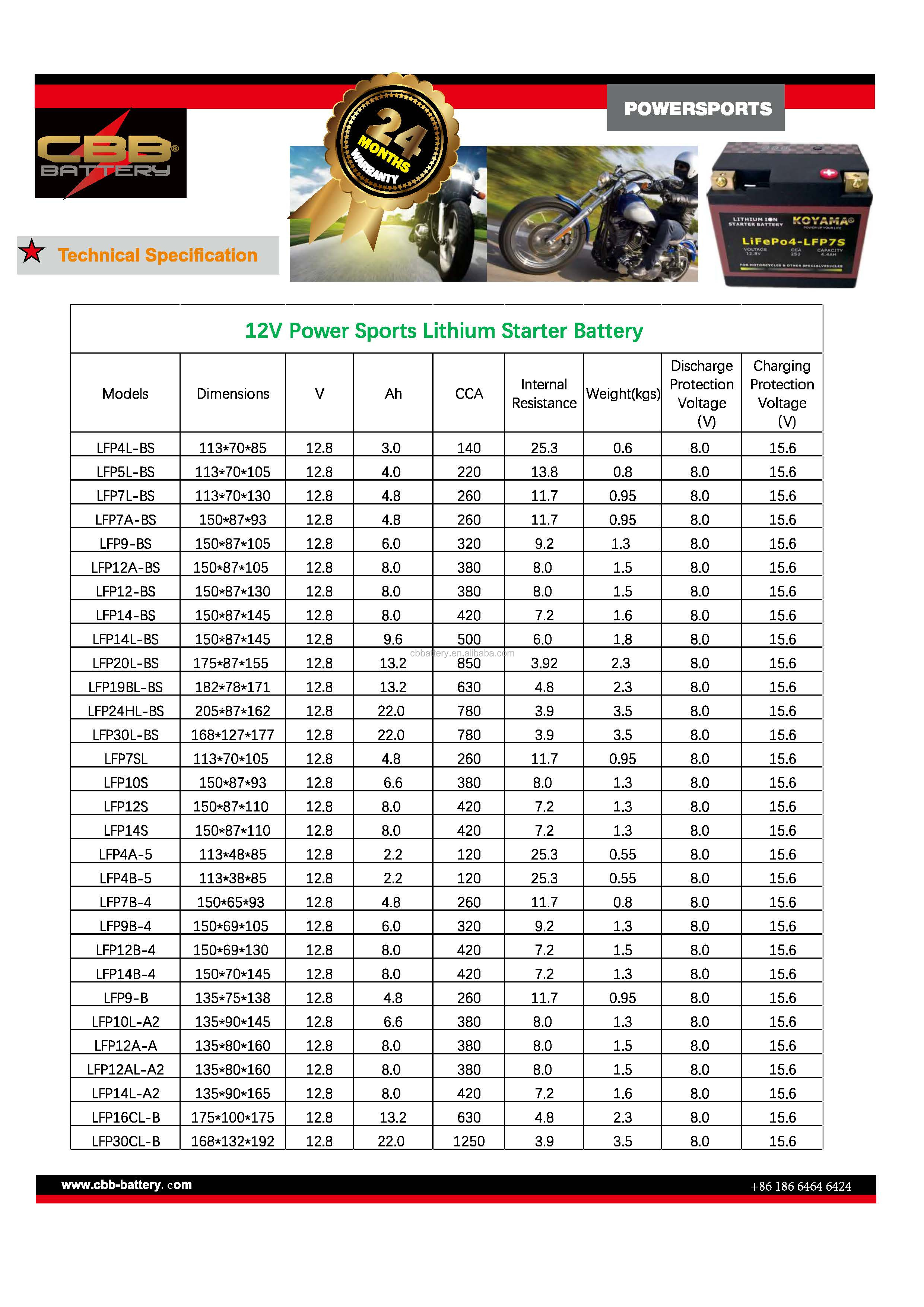
Product packaging

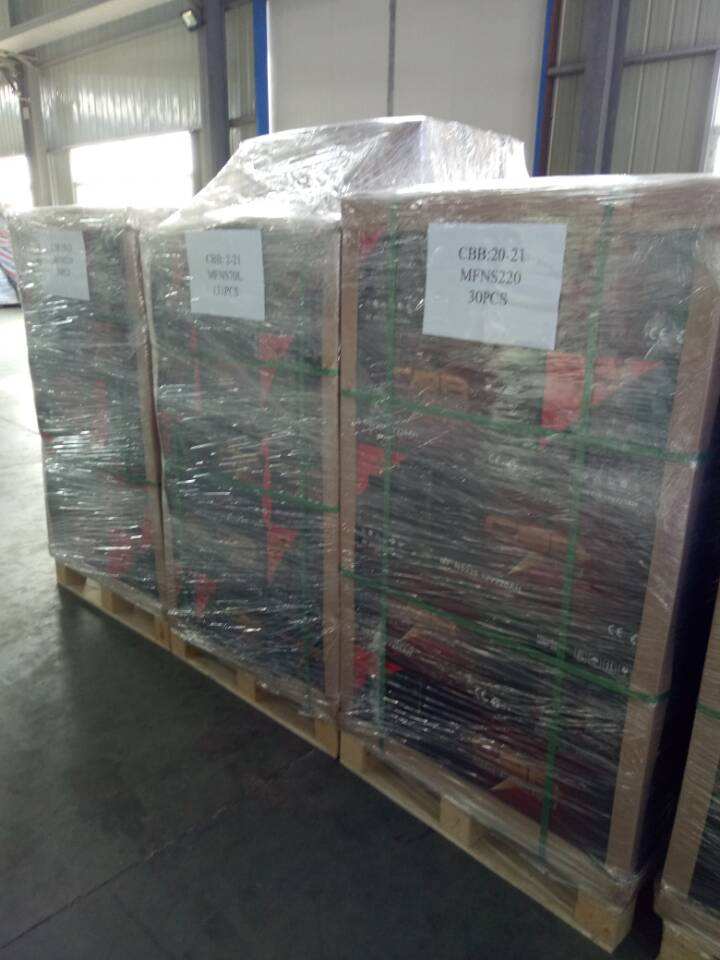
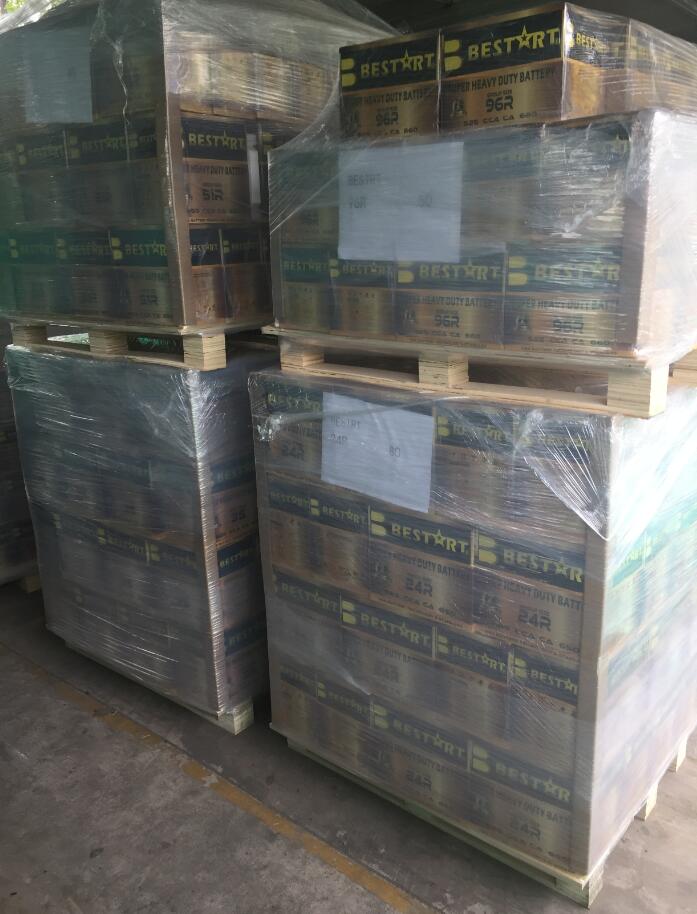
Certification
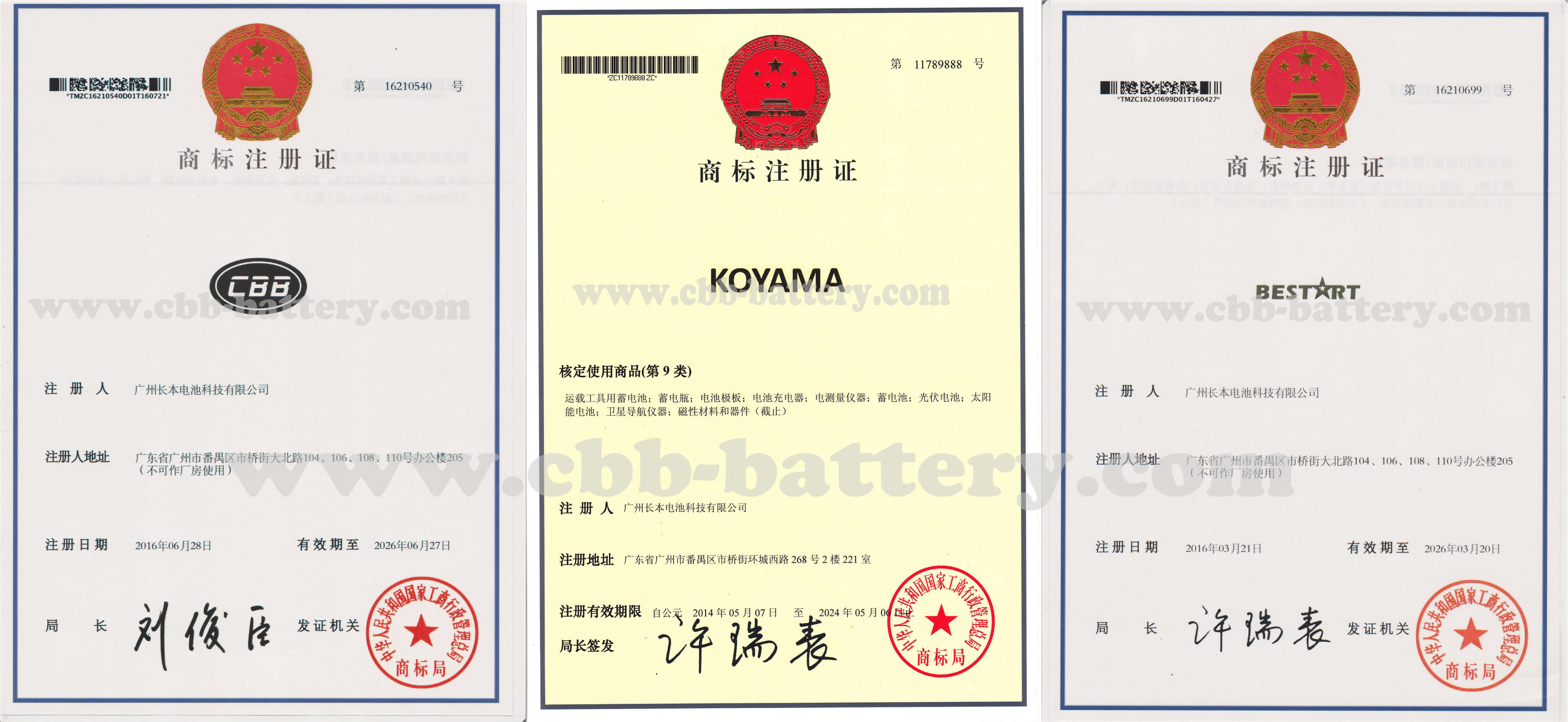
Company Profile

About CBB
CBB Battery Technology Co., Ltd.It is a large-scale modern comprehensive power enterprise specializing in the production, research and development and sales of a full range of lead-acid batteries. Our production capacity has reached over 3 million kVA per year. After years of development, we have successively established production bases in Jiangxi Province and Hunan Province.
Mainly produces industrial lead-acid batteries, such as valve-regulated lead-acid batteries, automobile batteries, motorcycle batteries, power batteries, tricycle batteries, electric vehicle batteries and their various plates. All batteries are widely used in UPS, power stations, solar power systems, telecommunications, vehicles, ships, motorcycles and other applications. All batteries can meet various power demands for standby, energy storage, deep cycle, startup, sports, and new energy systems.
In the past few years, by adopting a large number of advanced production lines and testing equipment, we have developed into a competitive advantage in this field, with first-class infrastructure, strict production management, unique technical know-how and special formulations.
We attach importance to scientific and technological talents and integrate production, education and research. With the efforts of professional and experienced engineers, well-trained management team and a large number of skilled production workers, we have established a complete quality management system to ensure reliable quality and long-term stability of all batteries. Our batteries are not only sold all over the country, but also exported to foreign countries, and the quality has been unanimously recognized by domestic and foreign users.
As one of the leading industrial battery manufacturers in China, we always put quality and environmental protection first. Our employees have a proven track record of protecting the planet over the years and have propelled us to become an industry leader in environmental protection while still maintaining the highest quality products on the market. With the re-certification of China's battery industry by China's Ministry of Environment in 2013, we have become the best company in environmental protection in South China. We are IS09001, IS014001, CE, UL, ROHS and OHSMS18001 certified.
In the spirit of unity, development, trust, and quality first, our team will provide you with the best quality batteries and services. It is our eternal pursuit to continuously meet the expectations and requirements of our customers, and to provide high-quality batteries and excellent after-sale services to customers at home and abroad.
Mainly produces industrial lead-acid batteries, such as valve-regulated lead-acid batteries, automobile batteries, motorcycle batteries, power batteries, tricycle batteries, electric vehicle batteries and their various plates. All batteries are widely used in UPS, power stations, solar power systems, telecommunications, vehicles, ships, motorcycles and other applications. All batteries can meet various power demands for standby, energy storage, deep cycle, startup, sports, and new energy systems.
In the past few years, by adopting a large number of advanced production lines and testing equipment, we have developed into a competitive advantage in this field, with first-class infrastructure, strict production management, unique technical know-how and special formulations.
We attach importance to scientific and technological talents and integrate production, education and research. With the efforts of professional and experienced engineers, well-trained management team and a large number of skilled production workers, we have established a complete quality management system to ensure reliable quality and long-term stability of all batteries. Our batteries are not only sold all over the country, but also exported to foreign countries, and the quality has been unanimously recognized by domestic and foreign users.
As one of the leading industrial battery manufacturers in China, we always put quality and environmental protection first. Our employees have a proven track record of protecting the planet over the years and have propelled us to become an industry leader in environmental protection while still maintaining the highest quality products on the market. With the re-certification of China's battery industry by China's Ministry of Environment in 2013, we have become the best company in environmental protection in South China. We are IS09001, IS014001, CE, UL, ROHS and OHSMS18001 certified.
In the spirit of unity, development, trust, and quality first, our team will provide you with the best quality batteries and services. It is our eternal pursuit to continuously meet the expectations and requirements of our customers, and to provide high-quality batteries and excellent after-sale services to customers at home and abroad.
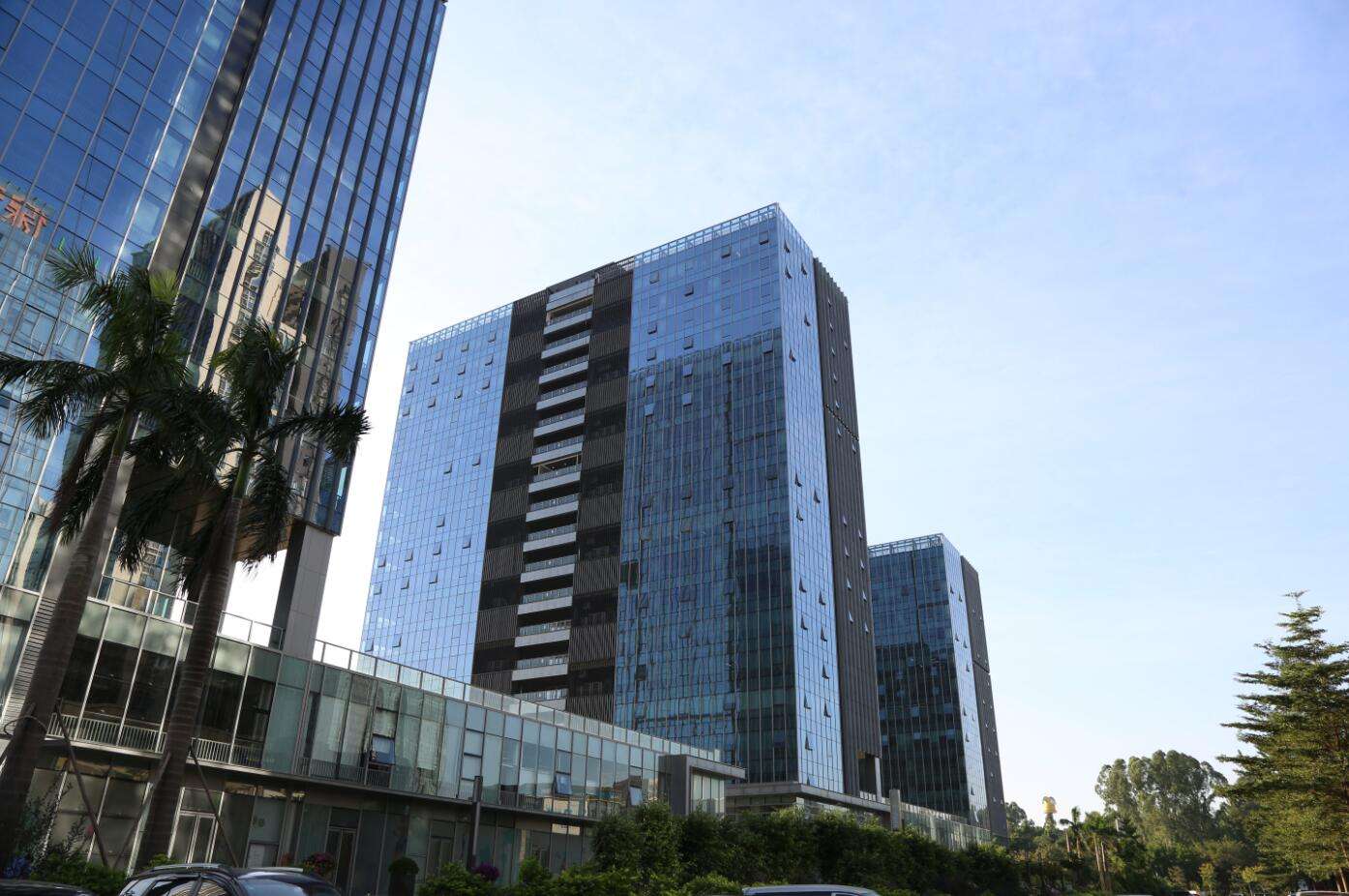
FAQ
Q 1. What is the definition of "recycling" and "standby"?
A:"Recycling" - Direct Power: Recycling can provide power for power tools, portable electronics. It can also be used for cyclic charging and discharging of electronic motorcycles or vacuum cleaners.
"Standby Use" - backup power supply: Standby Use is mainly used for emergency power supply to avoid possible damage caused by sudden power failure in the future.
"Standby Use" - backup power supply: Standby Use is mainly used for emergency power supply to avoid possible damage caused by sudden power failure in the future.
Q 2. What precautions should be taken when using CBB batteries in parallel or in series
A:1. Do not mix brands, models, and date codes?
2. No need to discharge individually and then charge in serial configuration.
3. When using in parallel, pay close attention to the difference of the voltage of each channel.
4. If the voltage difference of each circuit is too large, do not charge and discharge in parallel.
5. The environment of all circuits must be similar.
2. No need to discharge individually and then charge in serial configuration.
3. When using in parallel, pay close attention to the difference of the voltage of each channel.
4. If the voltage difference of each circuit is too large, do not charge and discharge in parallel.
5. The environment of all circuits must be similar.
Q 3. How to check the performance of the battery?
A:Different usage applications will use different methods to evaluate battery performance. Using the 20 hour rate or the 10 hour rate, you can discharge the battery with 0.05CA or 0.1CA until the battery reaches a terminal voltage of 10.25 volts. You can then count the amp hours to see if the battery is within specs. For a rate of 5 minutes, eg NPH1221W, you can discharge with 21 watts/cell until the terminal voltage reaches 9.6
volts, then measure the discharge time to see if it meets the final specification.
Q 4. How to convert between "Watts (W)" and "Amp Hours (Ah)"?
A:W=I x V = 4I (15 min rate) = 2CV = 2V (eg HC1217W = 17/4 = 4.25Ah)
Q 5. When should a deep cycle battery be used?
A:Use deep cycle batteries when using 50% or more capacity per cycle. The most common uses of deep cycle batteries are in applications that require deep repetitive discharges, such as powerful car audio systems, trolling motors, golf carts, electric wheelchairs, or RV house power. Public safety and high-performance vehicles are other applications that require the special characteristics of deep-cycle batteries.
Q 6. Do deep cycle batteries have "memory"?
A:Won't. The performance of deep cycle batteries degrades over time, but deep cycle batteries do not suffer from the "memory effect" that NiCd batteries do.
Q 7. What is the rating of the battery?
A:Lead-acid batteries are rated based on the capacity given over a specified period of time. There is no set industry standard for how
Rate the battery.
Q 8. How long can a battery last?
A:The service design life of a battery varies widely depending on how it is used, how it is maintained and charged, temperature, and more.
Q 9. Do I need to add water to my battery?
A:unnecessary. Sealed lead-acid batteries do not require the use of water.
Q 10. What determines VRLA battery life?
A:The life of a sealed lead-acid battery is determined by many factors. These include temperature, depth and rate of discharge, and number of charges and discharges (called cycles).
Q 11. What is the difference between float and loop application?
A:Float charging applications require the battery to be continuously charged and occasionally discharged. The cycle application periodically charges and discharges the battery.
Q 7. What is the rating of the battery?
A:Lead-acid batteries are rated based on the capacity given over a specified period of time. There is no set industry standard for how
Rate the battery.
Q 8. How long can a battery last?
A:The service design life of a battery varies widely depending on how it is used, how it is maintained and charged, temperature, and more.
Q 9. Do I need to add water to my battery?
A:unnecessary. Sealed lead-acid batteries do not require the use of water.
Q 10. What determines VRLA battery life?
A:The life of a sealed lead-acid battery is determined by many factors. These include temperature, depth and rate of discharge, and number of charges and discharges (called cycles).
Q 11. What is the difference between float and loop application?
A:Float charging applications require the battery to be continuously charged and occasionally discharged. The cycle application periodically charges and discharges the battery.
Q 12. Will overcharging damage the battery?
A:Overcharging is the most damaging factor in battery service. Often the boatman doesn't know this is happening because he thinks his alternator or battery charger is "automatic". Unfortunately, these automated circuits are sensitive to voltage surges, heat, direct lightning strikes, and indirect lightning electromagnetic effects, and may fail or alter their calibration. When they fail, overcharging begins to affect the battery. During overcharging, excessive current can cause oxides on the battery plates to "fall off" and settle to the bottom of the battery, while also causing the battery to heat up, which pulls moisture away from the electrolyte. After removal, this material (representing capacity) is no longer active in the battery. Additionally, the loss of moisture from the electrolyte may expose parts of the plates and cause the exposed areas to oxidize and become inactive, reducing additional capacity. Sealed batteries cannot avoid the same internal results when overcharged. In fact, sealed composite absorbent and gel batteries are particularly sensitive to overcharging. Once the moisture is removed from the battery, it cannot be replaced. Some batteries damaged by overcharging cannot be repaired. However, if caught early, corrective adjustments to the charging device will preserve the undamaged portion of the battery. The first signs of overcharging are excessive use of water in the battery, a battery that continues to heat up, or a higher-than-normal battery voltage under the influence of a charger. If overcharging is suspected, correct it immediately.
Q 13. Will over discharge damage the battery?
A:Over-discharge is a problem caused by the battery being overworked due to insufficient battery capacity. A depth of discharge in excess of 50% (actually well below 12.0 volts or 1.200 specific gravity) will significantly reduce the cycle life of the battery without increasing the usable cycle depth. Infrequent or insufficient full charging can also lead to an overdischarge symptom called sulphate. Although the charging device returned to normal, the symptoms of over-discharge showed a loss of battery capacity and a lower than normal specific gravity. Sulfation occurs when the sulfur in the electrolyte combines with the lead on the plate and forms lead sulfate. Once the condition becomes chronic, marine battery chargers will not remove hardened sulfates. Sulfate removal can usually be accomplished by proper desulfurization or equalization charging using an external manual battery charger. To accomplish this task, a fully charged plate battery must be charged at 6 to 10 amps. 2.4 to 2.5 volts per cell until all cells are free to deflate and their specific gravities return to their fully charged concentrations. Sealed AGM cells should reach 2.35 volts per cell and then discharge to 1.75 volts per cell. This process must be repeated until the capacity returns to the battery. Gel batteries may not recover. In most cases, the battery may be returned to complete its useful life. Charging alternators and float battery chargers (including regulated photovoltaic chargers) have automatic controls that gradually reduce the charging rate as the battery charges. It should be noted that dropping down to a few amps while charging does not mean
The battery is fully charged. There are three types of battery chargers. There are manual type, trickle type and automatic switcher type.
The battery is fully charged. There are three types of battery chargers. There are manual type, trickle type and automatic switcher type.
VIEW MORE
YOU MAY LIKE

